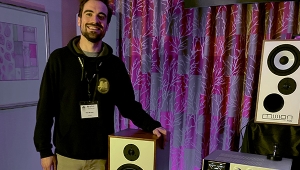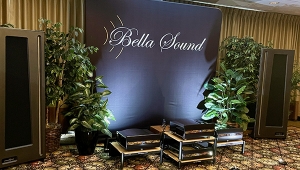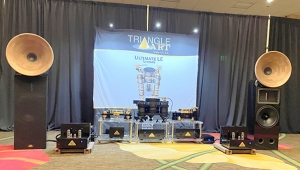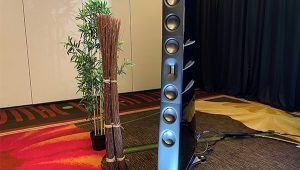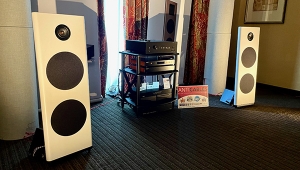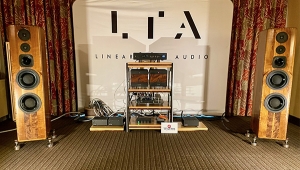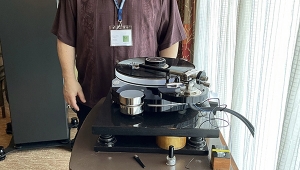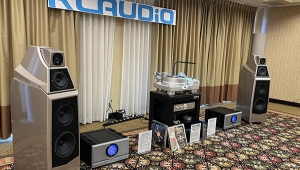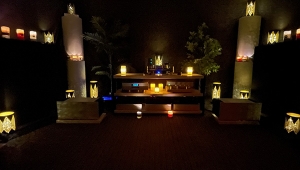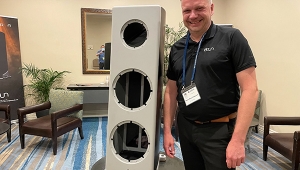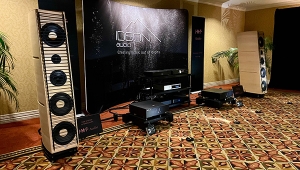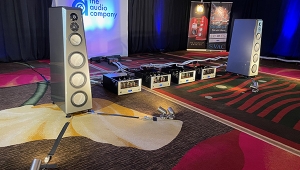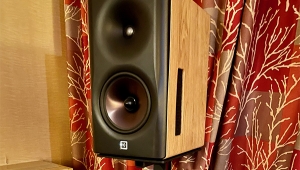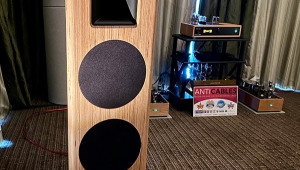| Columns Retired Columns & Blogs |
Angel City Audio—Loudspeaker Manufacturer
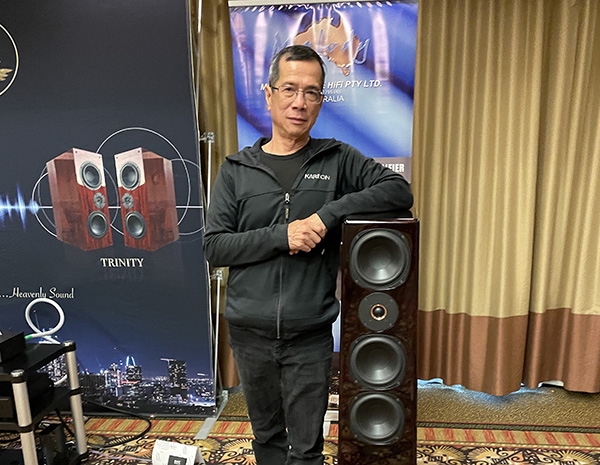
I wasn't sure what to expect when I headed for the Angel City Audio room at PAF 2024—were they a dealer? A distributor? A manufacturer? After chatting with ACA's owner Hugh Nguyen (above), I can say that the answer fell somewhere between "all three" and "it depends."
Nguyen has been in the high-end audio world since the early 2000s, first as a dealer, evolving over time to become the distributor or US representative for a few other companies, and most recently as the manufacturer of a line of speakers—while continuing in his previous roles as well. Hugh walked me through the system to explain the situation while, I might add, displaying a great deal of patience and wry sense of humor. The system included products from Eversolo and Zidoo, Onix, Melody, and Kimber, for which ACA's role(s) are in the dealer/distributor area.

This brings us to the Angel City Seraphim Prime speakers, where Nguyen is manufacturer, distributor, and dealer. ACA's first product was the Trinity, released in 2011. It was a stand-mounted two-way speaker that was well-received. Next came the original Seraphim a few years later, which subsequently morphed into the current Seraphim Prime we were listening to. The speaker is a mid-sized tower, 48" tall, 14" wide, and 22" deep, tipping the scales at about 130lb. Three made-to-spec 6.5"-diameter pulp/paper-cone drivers cover the bass and midrange, and a modified SEAS 1" soft-dome tweeter takes over above 2kHz.
One thing I found interesting was how the Seraphim covered the bass and midrange. Two of the 6.5" drivers were dedicated to the bass and one to the midrange, which seems simple enough. However, the crossover at 400Hz doesn't split the signal, it adds the third driver to the other two. The idea is that the three drivers' displacement will be much less than would be one's. This, in turn, allows the drivers to be effectively faster and better able to handle reproduce the critical low-level details across the midrange. This is probably a widely used approach but it seemed like a clever idea at the time.

I'd describe the Seraphim's performance as being airy and open, and having better than average transparency. The soundstage was wide and deep, with nicely portrayed images and a good sense of the space between them. I have no doubt the reputation and use of the Seraphim Primes will continue to grow and that they'll age well—provided, of course, that Nguyen finds good distributors and builds a solid network of dealers.
- Log in or register to post comments
